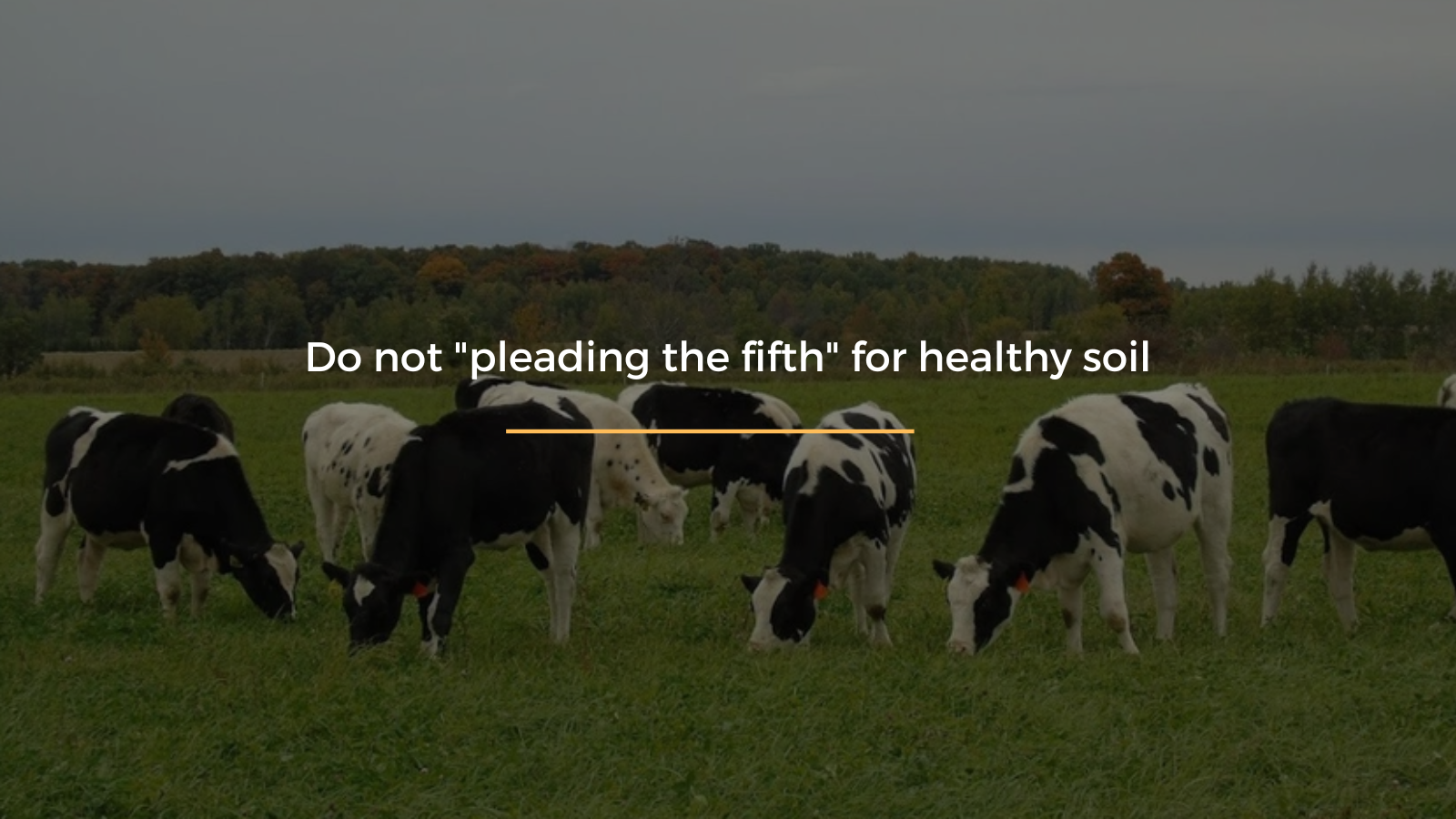
|
| Do not "pleading the fifth" for healthy soil |
- Minimize soil disturbance.
- Keep the soil covered.
- Maintain living roots in the soil.
- Maximize plant diversity.
- Integrate livestock.
The notion of soil health was not initially widely adopted, according to many environmentalists, but with the introduction of farmer-led communication efforts focused on watersheds and the help of cost-sharing programs for conservation initiatives, many farmers are now practicing soil health techniques. On their farms and in their communities, farmers are increasingly embracing soil health as a worthwhile cause. Although many people should be commended for this initiative, there is still a ton of room for improvement.
1 through 5 of the principles for soil health given here appear to be arranged in order of increasing difficulty of application. Farmers have been working hard to put these ideals into practice. That strategy makes excellent sense: start with the simplest tasks and gradually add in more difficult ones. However, it is becoming more and more clear that none of these principles alone can increase soil health as more studies in the field of soil health continue to be released. While achieving two or three of these principles should be praised, the work should not end there because they are all connected and complementary to one another, just like the soil itself.
This can be shown by seeing soil health as a ladder. By reducing tillage, farmers climb the ladder one rung at a time. With each added principle, they progress up the ladder one more rung. The summit of the ladder, where all five principles are incorporated into one system, represents the highest level of soil health.
We now have the "elephant in the room," so to speak. In its most basic form, grazing is what the fifth soil health principle, livestock integration, refers to. Many farmers are unwilling to put the fifth principle into practice. While the first four can frequently be implemented without significantly altering the current system (e.g., switching to no-till while continuing to plant the same crop), the fifth principle is frequently radical, especially for farmers who do not currently incorporate animals into their systems. Farmers that support soil health and have made strides toward the first four principles must decide whether to move forward or not.
Every person in life has the choice to accept or reject the truth of any given situation. Farmers have the same choice when it comes to the principles of soil health. The choice for every farmer who cares about conservation and wants to improve soil health is to either adhere to all five principles or to "plead the fifth" by ignoring the fifth principle, livestock integration. Farmers have the choice to reject grazing as the method required to achieve the highest level of soil health, just as "pleading the fifth" refers to remaining mute on a subject. Aside from the pun, farmers must choose between going "all in" by putting all five principles into practice or leaving some on the table by using only a portion of the available methods.
Controlled grazing
To complete the cycle, it is necessary to admit that not all grazing is created equally. Properly managed grazing is as damaging to the soil as any other disruptive practice. The carbon, nutrient, and biological cycles that are incomplete in most agricultural soils are completed by adequately managed grazing, which is the missing piece.
It should be noted that integrating livestock does not necessarily mean converting a facility to a pastureland. While a perennial system is the best option for enhancing potential soil health, there are alternative ways to begin grazing, such as grazing cover crops and crop leftovers. According to research, a specific land area can benefit incrementally from a few days of low-intensity grazing per season thanks to soil, plants, and livestock connections.
Think about how you can work toward putting all the principles for soil health into practice as you attend the following lecture or field day. Will you raise the fifth amendment by downplaying the benefits of livestock grazing, or will you insist on strict adherence to every principle?
Cavadini is a grazing outreach expert with the University of Wisconsin-Division Madison's of Extension.